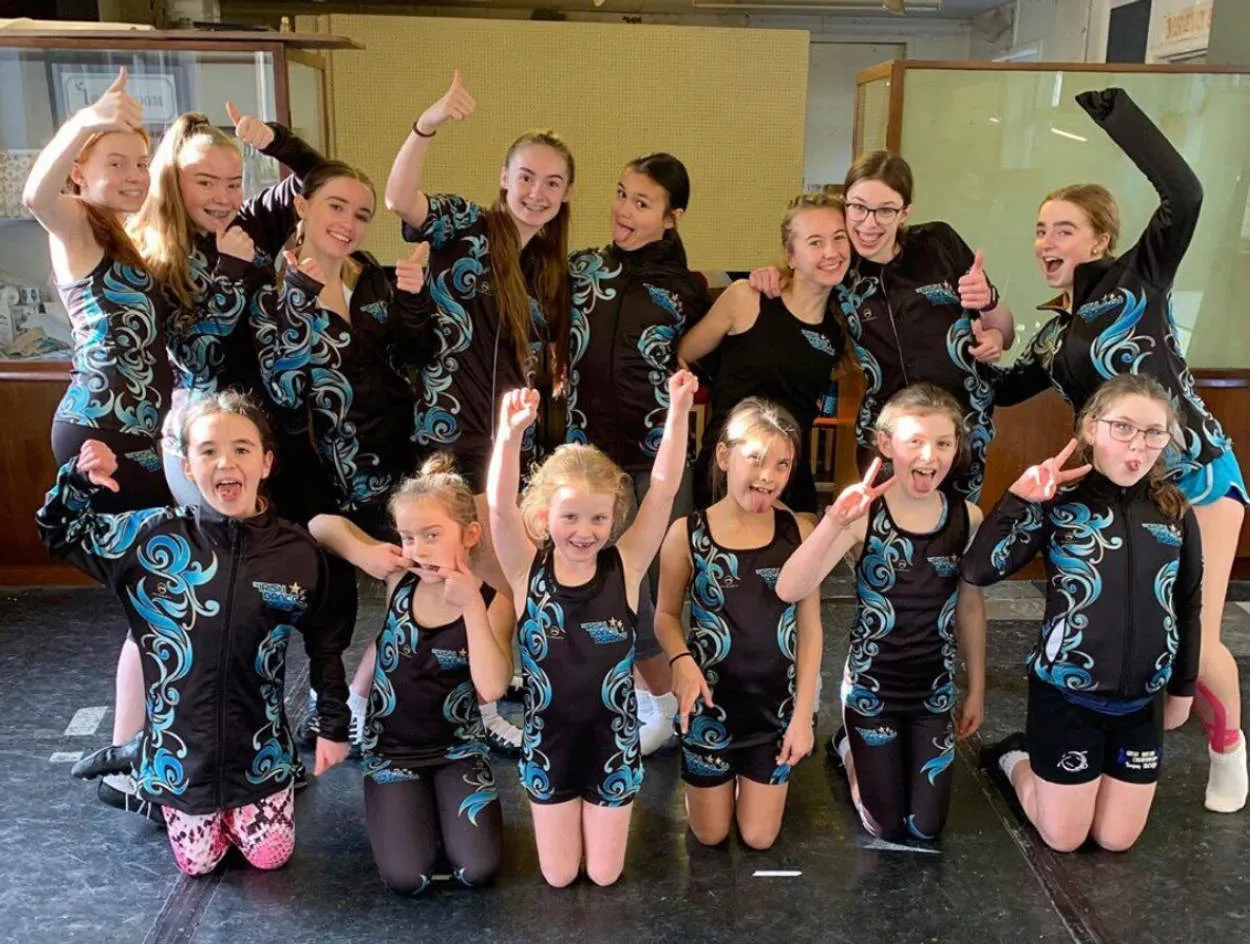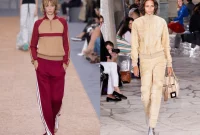Tracksuits and Dance: Combining Comfort and Movement
Tracksuits in the World of Dance
In the electrifying world of dance, tracksuits have become an essential garment that combines both comfort and movement. With their versatile design and practicality, tracksuits have found their way into various dance styles, revolutionizing the way dancers dress. Whether it’s hip-hop, breakdancing, or contemporary dance, tracksuits have become synonymous with a dancer’s wardrobe.
One of the primary reasons why tracksuits are favored by dancers is their ability to allow freedom of movement. The loose-fitting nature of tracksuit pants provides dancers with unrestricted leg movement, enabling them to execute high kicks, spins, and intricate footwork effortlessly. This flexibility is crucial in dance styles that demand dynamic and vigorous movements.
Tracksuits also offer dancers the added benefit of comfort. The soft and breathable materials used in their construction allow dancers to move with ease while staying cool and dry during intense dance sessions. The elastic waistbands and cuffs ensure a secure fit, eliminating any distractions or wardrobe malfunctions that could hinder a dancer’s performance.
Moreover, tracksuits have become a fashion statement within the dance community. Dancers often personalize their tracksuits with vibrant colors, bold patterns, and unique designs, enhancing their individuality and style. This customization not only adds a visual element to a dancer’s performance but also helps to create a cohesive and professional look for dance groups and troupes.
Tracksuits have undoubtedly found their place in the world of dance, providing dancers with the ideal combination of comfort, flexibility, and style. As the dance industry continues to evolve, tracksuits remain a timeless and essential garment that symbolizes the fusion of fashion and movement.
The Evolution of Dancewear
Dancewear has undergone a remarkable evolution throughout history, adapting to the changing needs and styles of dancers. From traditional ballet attire to modern-day tracksuits, dancewear has combined comfort and movement to enhance the dancer’s performance.
1. Ballet Roots
The origins of dancewear can be traced back to ballet. In the early days, ballet dancers wore corsets, voluminous dresses, and pointe shoes. However, as the art form progressed, ballet attire became more streamlined and practical to allow for greater flexibility and range of movement.
2. Innovation in Materials
Over time, advancements in textile technology have revolutionized dancewear. Fabrics such as spandex, lycra, and microfiber are now commonly used due to their stretchability, breathability, and moisture-wicking properties. These materials enable dancers to move freely while keeping them comfortable and dry during intense routines.
3. Embracing Diversity
Another important aspect of the evolution of dancewear is its inclusive nature. Dancewear now caters to dancers of various body types and cultural backgrounds. Companies have started offering a wider range of sizes and designs, allowing dancers to express their individuality while feeling confident and comfortable in their attire.
4. Fusion of Fashion and Function
In recent years, dancewear has also embraced fashion trends. Many dancers now opt for stylish tracksuits that not only provide comfort and flexibility but also reflect their personal style. Tracksuits made from lightweight, breathable fabrics have become popular choices for both rehearsals and performances, bridging the gap between sportswear and dancewear.
5. Technological Advancements
The incorporation of technology has further revolutionized dancewear. Some dancewear brands have integrated sensors and motion-capture technology into their garments, allowing dancers to track their movements and analyze their performance. This merging of technology and dancewear opens up new possibilities for training and artistic expression.
In conclusion, the evolution of dancewear has seen a shift towards comfort, functionality, inclusivity, and style. As dancers continue to push boundaries and explore new forms of movement, it is likely that dancewear will continue to evolve to meet their needs, enhancing their performance and artistic expression.
Choosing Tracksuits for Different Dance Styles
When it comes to dance, combining comfort and movement is essential for performers. Tracksuits are a popular choice for dancers as they offer both style and functionality. However, it’s important to consider the specific dance style and its requirements when choosing a tracksuit. Here are some tips to help you pick the right tracksuit for different dance styles:
1. Ballet
In ballet, where grace and elegance are key, opt for a tracksuit that is form-fitting and lightweight. Look for materials that allow freedom of movement while providing adequate coverage. A tracksuit with a high neck and long sleeves can help keep muscles warm during practice sessions.
2. Hip Hop
For hip hop dancers, style and attitude are paramount. Choose a tracksuit that reflects the vibe of the dance style. Look for bold colors, unique patterns, and streetwear-inspired designs. Tracksuits made of breathable fabrics like nylon or polyester can ensure comfort during energetic routines.
3. Contemporary
In contemporary dance, fluidity and expression are emphasized. Consider tracksuits that allow for a wide range of motion. Loose-fitting pants with elastic waistbands and a lightweight, stretchable jacket can provide the desired comfort while enhancing the visual aesthetic of contemporary dance.
4. Jazz
Jazz dance requires outfits that are both functional and stylish. Choose tracksuits that accentuate body lines, such as those with tapered pants and fitted jackets. Fabric choices like spandex blends can offer the necessary flexibility and support for fast-paced movements.
5. Tap Dance
Tap dance involves intricate footwork and rhythm. Tracksuits with wide-leg pants and loose tops can provide ease of movement and facilitate sound production when wearing tap shoes. Look for tracksuits made of breathable materials to keep cool during intense rehearsals or performances.
Remember, while the style and design of a tracksuit are important, the comfort and functionality it offers should be the top priority. By considering the specific requirements of different dance styles, you can choose a tracksuit that not only looks great but also allows you to move with ease and confidence.
Tracksuit Innovations for Dancers
Tracksuits have always been a staple in the world of dance, providing dancers with the perfect combination of comfort and movement. Over the years, several innovations have emerged to enhance the functionality and style of tracksuits specifically designed for dancers.
Moisture-Wicking Fabrics
One of the key advancements in tracksuit design for dancers is the use of moisture-wicking fabrics. These specialized materials are designed to draw moisture away from the body, keeping dancers dry and comfortable during intense rehearsals or performances.
Stretchable and Breathable Materials
Dancers require freedom of movement and breathable fabrics that can withstand the demands of their art form. Modern tracksuits now incorporate stretchable materials that allow for a wide range of motions without restricting flexibility. These materials also promote better airflow, preventing dancers from overheating.
Tapered Cuts and Tailored Fit
To complement the aesthetic appeal of dancers, tracksuits now feature tapered cuts and a tailored fit. This design not only enhances the overall appearance but also prevents excess fabric from getting in the way of movements, maintaining a sleek and stylish look on stage.
Functional Details
Tracksuits for dancers often come with functional details that cater to their specific needs. These may include reinforced knee and elbow patches for extra durability during floor work, strategically placed pockets for storing small essentials, and adjustable hems or cuffs for customization.
In Conclusion
The continuous innovation in tracksuit design for dancers reflects the industry’s commitment to providing the best possible gear for performers. From moisture-wicking fabrics to tailored fits and functional details, these advancements ensure dancers can focus on their craft while feeling comfortable and confident in their attire.
The Influence of Dance Culture on Tracksuit Fashion
In recent years, there has been a notable influence of dance culture on tracksuit fashion. Tracksuits, known for their comfort and versatility, have become more than just athletic wear. They have transcended into a fashion trend that is widely embraced by individuals from various backgrounds. This transformation can be attributed to the fusion of fashion and dance, creating a unique style that combines both comfort and movement.
Dance culture, with its vibrant energy and fluid movements, has played a significant role in shaping tracksuit fashion. Dancers, who require unrestricted mobility, have championed the use of tracksuits as essential attire. Their rhythmic movements, whether in street dance, hip-hop, or contemporary styles, have caught the attention of fashion designers and enthusiasts alike.
The influence of dance culture on tracksuit fashion can be seen in the incorporation of bold colors and eye-catching patterns. Traditional tracksuits were known for their solid colors and minimalistic designs. However, inspired by the dynamic nature of dance, designers began experimenting with vibrant hues and geometric prints, giving tracksuits a fresh and modern look. This infusion of creativity has made tracksuits more visually appealing and suitable for everyday wear.
Furthermore, the functionality of tracksuits has been enhanced to meet the demands of dancers. Fabrics with moisture-wicking properties and stretchability are now commonly used, allowing performers to stay comfortable and move freely without limitations. This focus on performance-enhancing features has translated into tracksuits becoming a practical choice for individuals who appreciate both fashion and functionality.
The influence of dance culture on tracksuit fashion has also extended beyond the realm of dance studios and performances. Tracksuits are now embraced by fashion-forward individuals who seek a casual yet stylish look. Influencers and celebrities have been frequently spotted sporting tracksuits as part of their everyday attire, further solidifying their status as a fashionable staple.
In conclusion, the fusion of dance culture and tracksuit fashion has resulted in a trend that offers both comfort and style. The influence of dance can be seen in the vibrant colors, patterns, and functional features of contemporary tracksuits. As dance culture continues to evolve, it is expected that it will continue to leave its mark on fashion, ensuring that tracksuits remain a beloved and fashion-forward choice for years to come.
Conclusion
Tracksuits offer the perfect combination of comfort and movement for dancers. The lightweight and stretchable fabric allows for unrestricted movement, while the relaxed fit ensures optimal comfort during intense dance routines. With their stylish designs, tracksuits have become a popular choice among dancers of all genres. So whether it’s for practice or performance, tracksuits are the go-to attire for dancers looking to prioritize both comfort and style.




